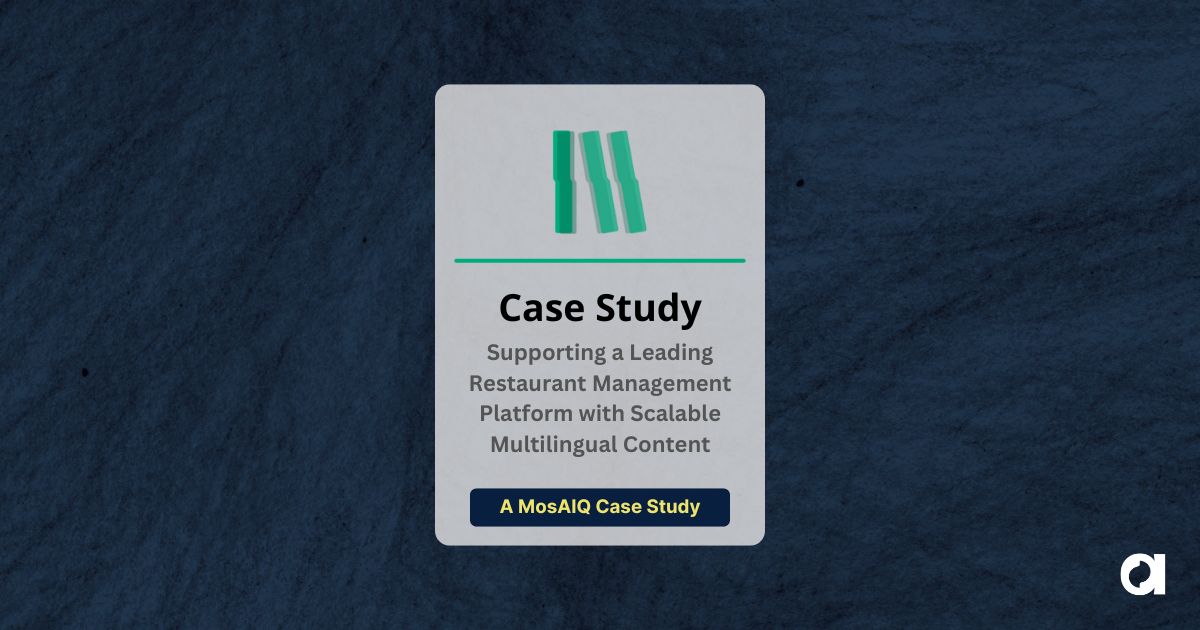The role of international search engine optimization (SEO) is getting harder to define. Not because it’s gone away, but because the way people search is beginning to change. How quickly that shift will go mainstream, or what the new search experience will ultimately look like, remains to be seen—but you can already see it happening in real time.
AI-generated summaries now appear at the top of many results pages. Queries that once went through Google are now being asked directly in tools like ChatGPT. And the content people do see is often pulled from sources they never clicked; what surfaces is chosen by algorithms that reward structure, clarity, and authority over keywords or tags. For global content teams, that makes visibility hard to measure and even harder to guarantee.
These new models for searching haven’t made international SEO irrelevant. But they have raised the bar for what localization teams need to consider. Translation alone won’t make your content discoverable. Visibility now depends on how well content aligns with user intent, how clearly it’s structured, and whether the source is trusted enough to be used in the first place.
That’s a harder bar to clear. Localization teams have to shape how content is built, not just how it’s translated. That includes decisions about page structure, credibility signals, and how those signals appear across markets. That starts to look less like translation and more like global content publishing.
These choices play a direct role in whether AI tools and search engines can use the content. The question isn’t just whether it’s right. It’s whether anyone sees it at all.
The New Reality for International SEO
For a long time, international SEO followed a well-understood formula. Teams would localize content that performed well in English, apply the right tags, and publish versions for each market. As long as the page was technically sound and linguistically accurate, it was expected to rank.
That model depended on predictable rules. If you picked the right keywords, built enough backlinks, and tagged your pages correctly, Google would eventually reward the effort. That kind of control is disappearing. AI tools don’t use keyword density to rank pages. They generate answers based on content that already carries weight because it’s been cited, trained on, or shown to match how people ask questions.
This isn’t the end of optimization, but it might be the end of manipulating search results to your benefit. If your content isn’t clear, structured, and regionally trusted, the system has no reason to include it. SEO used to reward persistence. AI rewards relevance.
Rethinking Visibility for Global Content
Getting seen now depends on more than language accuracy or technical tags. Search platforms and AI systems look for signals that help them choose what to show, not just what exists. For localization teams, that means visibility is tied to three things: intent, authority, and structure.
Intent is the “why” behind a user’s query. It’s the goal they’re trying to achieve, whether it’s finding information, buying a product, or navigating to a page. In a multilingual context, intent means doing more than localizing keywords. Content needs to reflect the phrasing, tone, and context users bring to their questions. This varies by market because it’s shaped by how people think about the topic, not just how they translate it.

Before localization begins, teams should review existing search data in each market. For example, a localization team working on healthcare content might verify common local search terms like “patient privacy rules Canada” or “health insurance refund Germany” and then clearly include these phrases in their translation instructions.
Authority has also changed. You don’t become visible by publishing often or hitting word counts. AI tools rely on signals of trust: citations, domain history, presence in training data, and recognition within a region. If the system doesn’t see the content as reliable, it doesn’t include it.
Structure is what makes content usable. Machines need clean layout, clear headings, metadata, and formats that surface answers. Pages that aren’t scannable or quotable are less likely to appear, no matter how accurate the content is.
These three aspects of a search process are not localization’s usual metrics, and you can’t meet them by accident. They’re not captured by translation quality scores or delivery timelines. But they affect whether the content gets picked up at all. If intent is misaligned, the system won’t recognize the question. If the source lacks authority, it won’t get included. If the structure breaks, the answer won’t be usable.
These factors are already influencing what shows up in an AI-oriented search. None of this is being tracked in the usual workflows. But it still determines what shows up. If localization teams don’t take it on, chances are that it won’t get done.
Lost and Found:
Making Local Content Discoverable
The day-to-day reality is that most teams are still maintaining the SEO basics. They’re tracking keywords, applying hreflang tags, and managing crawlability. That’s all still necessary. It just doesn’t go far enough. Visibility now depends on decisions that rarely show up in a localization brief, such as how phrasing is shaped, how trust is earned, and whether the content makes sense to the systems that process it.
Whether it’s SEO for Latin America, Japan, or China, localization teams can start by focusing on what’s actually being asked in each market. That means identifying common queries, formats, and search patterns before content gets finalized. Localization teams should focus on planning content around what people are already trying to find, not just translating what’s already been written.
Then there’s distribution. A localized webpage that lives in isolation, without citations or local references, doesn’t register as credible. Visibility improves when teams help place content where it already has recognition through local platforms, known contributors, or regionally trusted sites.
Structure is something localization teams can directly influence. Localization teams can check that layout, hierarchy, and metadata remain intact across versions. If headings collapse or formatting strips out context, the content becomes harder to surface, even if the translation is perfect.
For instance, a recent Argos project involving AI-generated multilingual content for a major employment platform showed measurable improvements when localization teams directly verified content structure and market-specific intent. Their involvement resulted in improved discoverability and higher engagement across regions.
Traditional SEO still applies. Hreflang tags, crawlability, and metadata are part of the job. But visibility now depends on more than technical access. It depends on how well the content reflects local intent, connects to trusted sources, and holds up under machine processing. Localization teams still have a role in all of that, whether it’s written into the brief or not.
What’s Next for Localization Teams and International SEO
Localization teams are facing new expectations. Visibility is now part of their job, and it goes beyond translating content accurately or applying tags correctly.
For teams, that means clearly understanding what users are asking in different markets, using that knowledge early, and applying it intentionally to their localization briefs. It means explicitly stating how content should be structured to align with machine-driven search behavior, whether that’s clearly phrased headings, direct answers, or consistent metadata.
Teams that actively shape how content is built will have an advantage in search results. Those that leave visibility to chance risk producing content that no one finds, despite their best efforts. International SEO still matters, and localization teams now have a direct role to play in making sure their content gets seen.
Ready to see how your multilingual content can perform better in search? Contact us to discuss how your localization team can improve international SEO results.
 Argos Multilingual
3 min. read
Argos Multilingual
3 min. read
Over its 132 pages, Global Ambitions: (R)Evolution in Motion offers vital perspectives on the ongoing impacts and influences of GenAI on the language services industry San Francisco (CA), September 3, 2025 Argos Multilingual is pleased to announce the immediate release of the 2025 edition of the Global Ambitions publication. It is available online and in […]

 Argos Multilingual
5 min. read
Argos Multilingual
5 min. read
Most localization work is built on a basic, often flawed assumption: English comes first. Whether it’s documentation, marketing, or product content, English is often treated as the hub that everything else connects to. It’s the basis for termbases, translation memory alignment, review processes, and even pricing structures. Content flows from English into everything else. But […]












